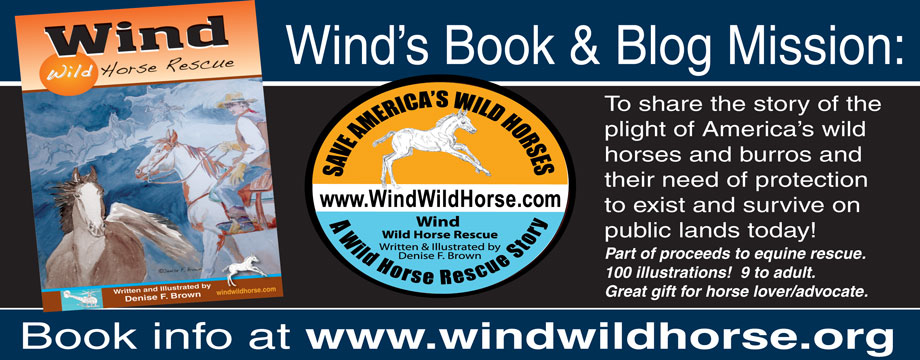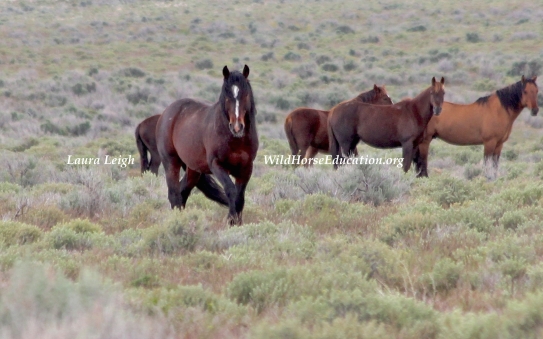
Wild Horse Education (WHE) is an organization based in Nevada, yet we deal with wild horse and burro issues nationwide. WHE does travel to multiple states yet we made NV our home. We are often asked why?
We know that there are multiple herds in other states that often get more publicity, funding, visitors than any area in NV, yet this state is home to more than half the population of all wild horses that are left in the United States. Making this our central location made perfect sense.
When the public thinks of NV they think of Reno and Las Vegas, but those are actually only two small areas in a state that is comprised of nearly 85% of public land. The Bureau of Land Management (BLM) manages 83 Herd Management Areas in NV comprising nearly 15.8 million acres. The next on the list is CA with 22, on about 2.5 million acres (several of the HMAs managed by CA actually physically exist in the NW corner of the state of NV, not in CA). Montana manages only the Pryor Mountain wild horse Range (not an HMA) comprising a little over 33,000 acres.
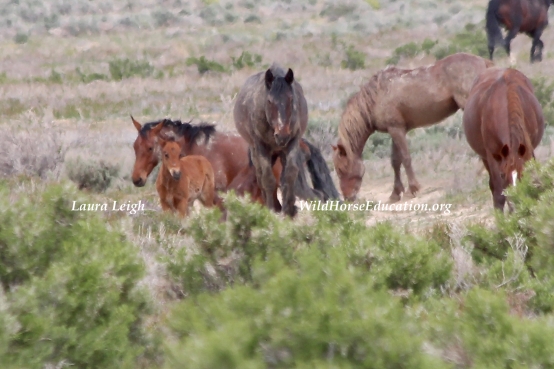
The BLM is only one jurisdiction that manages free roaming horses on state and federal land. The NV Department of Agriculture, as an example, manages the Virginia Range on a public and private land base of about 200,000 acres (larger than the Pryor Mountain Range).
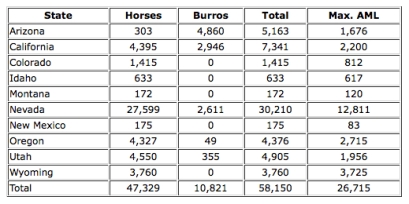
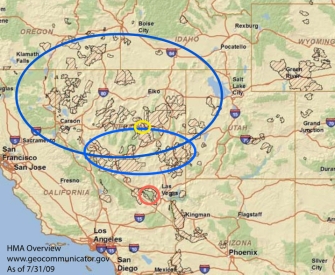
So when you hear that WHE “only covers NV,” think again. WHE covers a broad territory and watches a lot of horses. Covering an area of 110,562 square miles, NV is the seventh-largest state in the US. Many other advocacy organizations have nicknamed WHE “the bag lady of wild horses,” because we often live, literally, out of a moving vehicle and a suitcase.
Wen we talk about the wild horses and burros in the state it is good to keep the landscape they live in mind. NV is one of the most arid states in the nation. Many states have seasons that are drier than those seasons in NV, but overall NV comes up as the driest state year round with an average yearly rainfall statewide of about 8 inches. The average annual number of days with precipitation (rain or snow) of 0.01 inch or more varies considerably; Las Vegas averages 23, Reno 49, Winnemucca 67, Ely 72, and Elko 78.
So that might lead a lot of people to wonder “Why would you ever pick a state like NV to run domestic livestock or move your family?” Because there was money to be made as our nation defined itself.
Nevada did not become a state until 1864. The wealth coming out of the ground in NV through extraction, and the ongoing financial needs of the Civil War, saw NV “Battle Born” into statehood. The vast majority of the land base was not privately owned and the Constitution of Nevada was written to give federal authority over those lands in exchange for the benefits of statehood. To feed troops and miners the federal government began multiple programs to enhance and manage livestock. If you are interested in learning more about “how we got here” you can read about mining history HERE and about livestock and the federal grazing program HERE.
The man made push for resource, power and wealth led to sever degradation of our landscape. It also led to violence, people throughout history have always killed each other “for a dollar.” The last broad sweep in legislation in the West came in 1976 through the Federal Land Policy and Management Act (FLPMA), in the timeline of human history this is still a recent development and a lot of people resent the restrictions.
The modern horse evolved on the North American continent (not some three-toed relative). Tooth structure, digestion, fecal compatibility and thermoregulation in Equus (the modern horse) all evolved in cohesion with the grass plains of North America. Currently science is determining if and when Equus became extinct on the North American continent, trade records with Asian societies may show that horses never truly went extinct. But for the sake of this discussion we will abide by the recent consensus that horses went extinct about 8,000 years ago in North America.
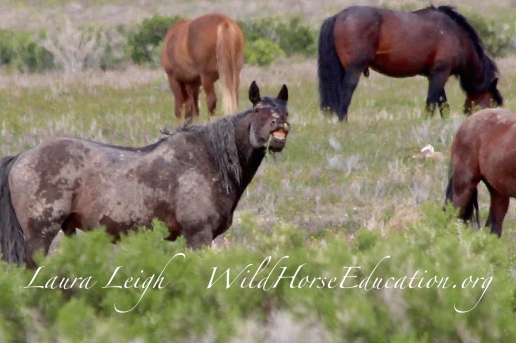
In the 16th Century Spainish explorers brought horses with them. When they escaped, they thrived.
When livestock operators released horses to breed on the open range for use in their operations, they thrived.
This led to our western landscape becoming occupied by nearly 2 million wild horses as multiple interests engaged in a resource grab for profit.
Wild horses are extraordinary survivors. The physical and political landscape they live in creates a multitude of hardship. Wild horses and burros were used to fight in our wars, work our livestock, work in mines as well as being hunted down for use in fertilizer and chicken feed. Yet they survived all of that and still remain a symbol of the resilience and beauty of their species on our open range.
In Nevada the political and physical landscape is becoming increasingly treacherous to their continued survival. We will cover more in part two.
To help Laura Leigh stay in the fight please go to this link: https://wildhorseeducation.org/ways-to-support-the-work-of-whe/

